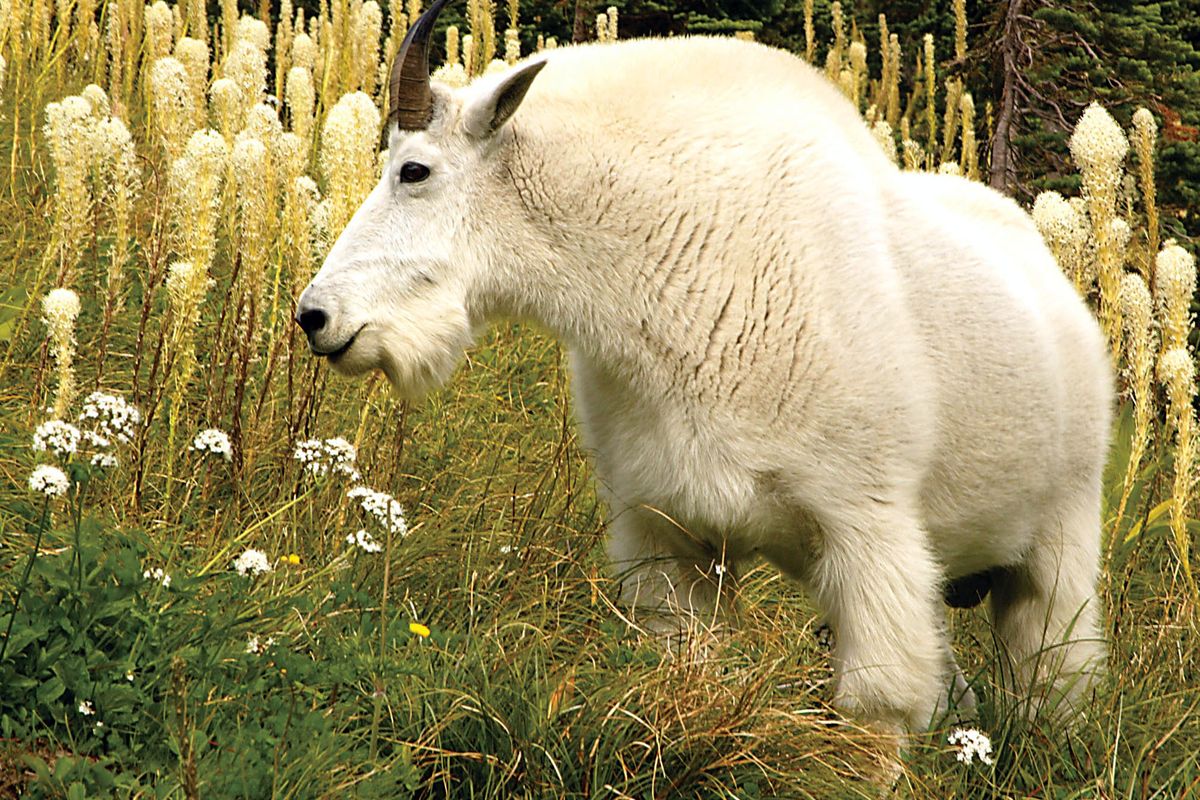Officials plan to handle increased visitation to Glacer and protect its wildlife

Take a hike at Glacier National Park’s Logan Pass, and you’re almost guaranteed to see mountain goats. You’ll probably spot a bighorn sheep or two as well.
The goats often can be found near, or on, the Hidden Lake Overlook Trail, and they don’t seem to shy away from visitors.
“We’ve always kind of been a little concerned about the number of people and goats up there,” said Mark Biel, natural resources program manager for Glacier.
Glacier National Park, along with the University of Montana, Wildlife Conservation Society, and Montana Fish, Wildlife and Parks, recently launched a study looking at interactions between humans and mountain goats and sheep and what effect it has on the animals.
“It’s kind of the poster child up there for human-wildlife interactions,” Biel said of Logan Pass.
Last summer, researchers collared six mountain goats on Logan Pass in an effort to track their movements. This summer they hope to collar more goats to bring the total to 20.
That will help biologists find out whether the same goats are hanging out at Logan Pass day after day and year after year. Researchers also will be able to track animals’ movements throughout the day.
Researchers don’t need to collar bighorn sheep because they can tell the animals apart thanks to their horns, Biel said.
Already, each of the six goat collars have given researchers 3,000 data points.
The collars also will help researchers track reproductive data.
“We’re collaring predominately females,” Biel said.
Biel hopes to find out why sheep and goats like Logan Pass. Is it because the large number of people scare predators away?
“Are they attracted to the area because of the visitors who go up there and go off into the bushes and use the restroom?” Biel asked.
Glacier’s goats and sheep tend to be mineral-deprived and urine is a great source of minerals.
Researchers also hope to find out if the number of goats and sheep at Logan Pass is increasing. Anecdotal evidence suggests animal numbers have been fairly consistent, but the collars should help give biologists hard numbers.
Researchers also will study human behavior and track visitor numbers at Logan Pass.
“Who’s initiating the interaction?” Biel said. Is it the wildlife or the humans?
Biel suspects the number of people at Logan Pass is increasing.
“What is that increase doing to the wildlife?” he asked. “Is it good? Is it bad? Is it indifferent?”
So far, researchers have noticed people feeding sheep and goats, as well as approaching them to take photos or try to pet the animals.
“They’re not designed to eat pickles and Cheetos,” Biel said of the wildlife.
Researchers plan to experiment with putting up different signs on the trail, using different tones to tell people to stay away from the animals to see what type of signage works best.
Biologists also will try some aversive conditioning techniques, such as waving their arms or yelling at animals that get too close to the trail.
They want to see if this scares the animals away and if it does, how long do they stay away from the trail?
Glacier hasn’t had any bighorn sheep or mountain goat attacks. However, in 2010 a hiker in Olympic National Park was gored to death by a mountain goat.
Biel hopes the three-year study will culminate in a bighorn sheep and mountain goat management plan for Glacier.
That plan could limit the amount of off-trail travel at Logan Pass, could set rules about visitors approaching animals or could call for the installation of composting toilets along the trail.
“It could be any number of things,” Biel said.
Glacier officials don’t want to tell people they can’t go to Logan Pass and see the animals there, but they do want to keep visitors and animals safe.
“This is one of the few parks in the country that you can see mountain goats without even trying,” Biel said.